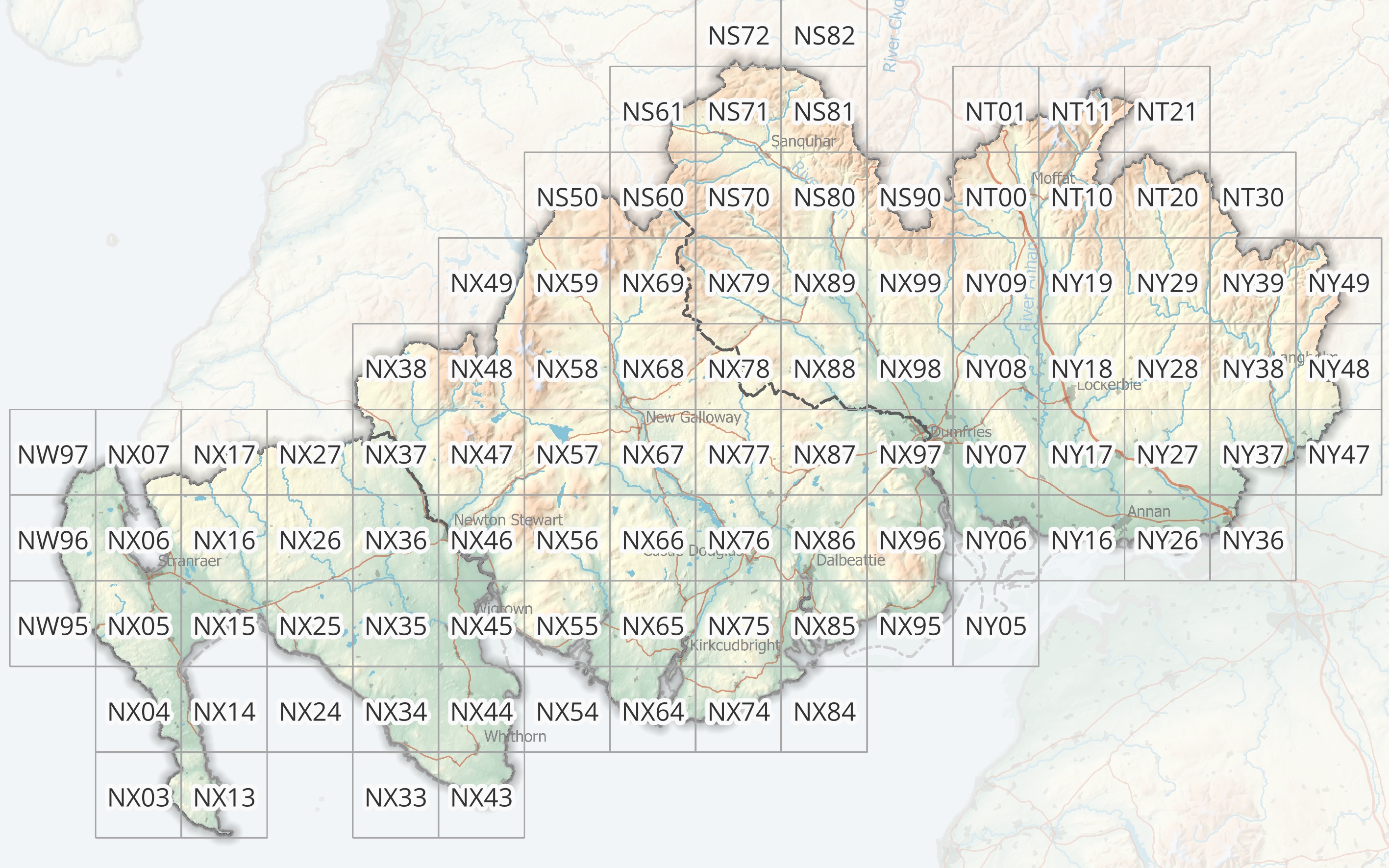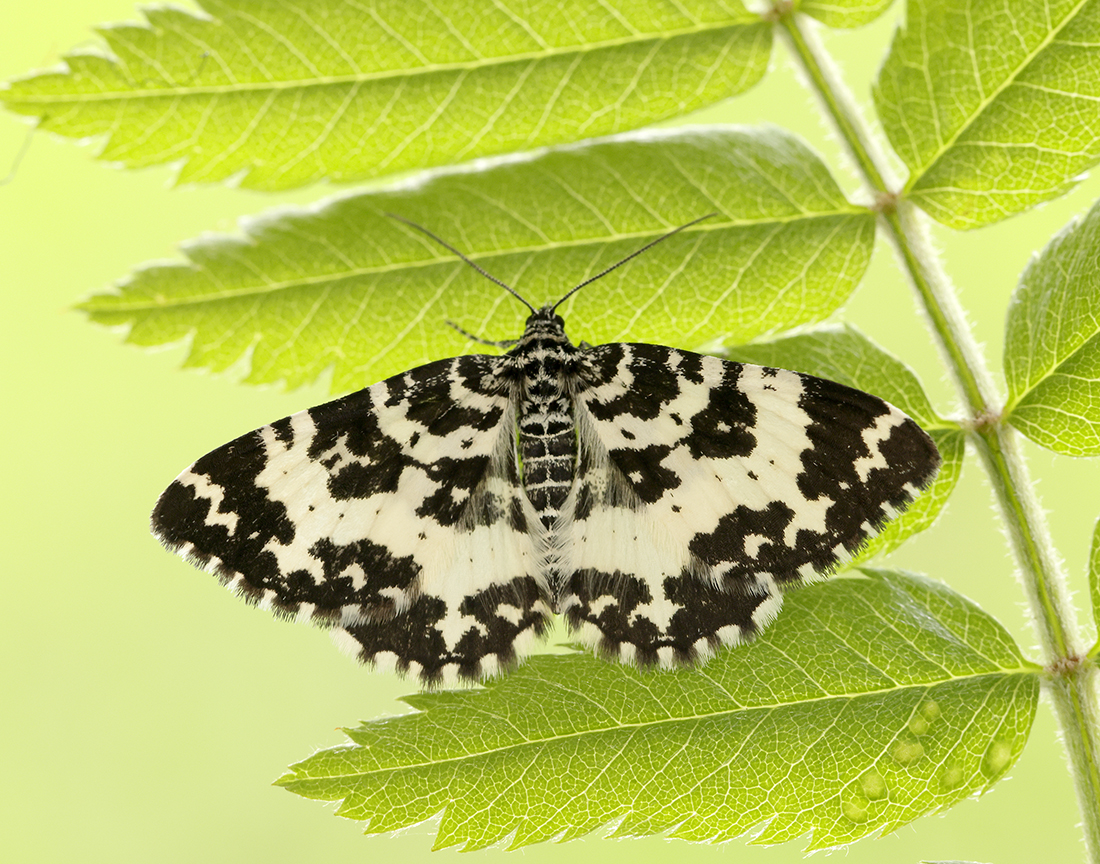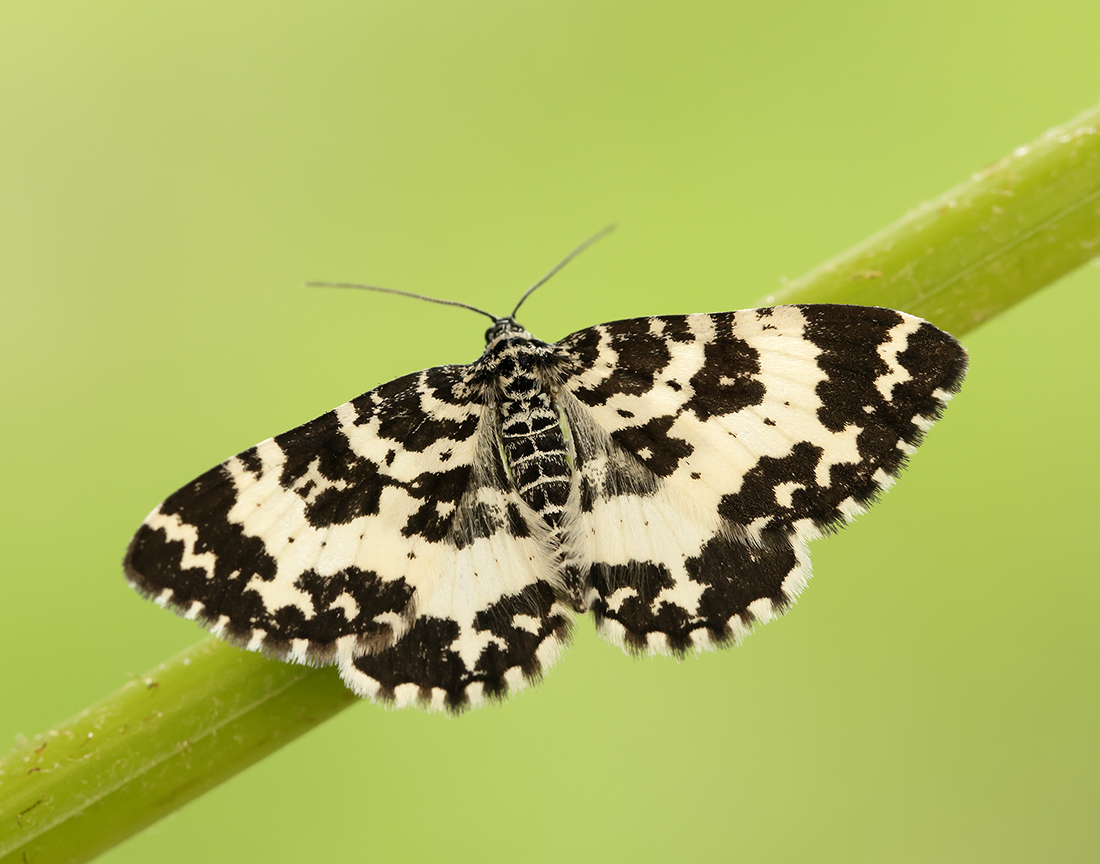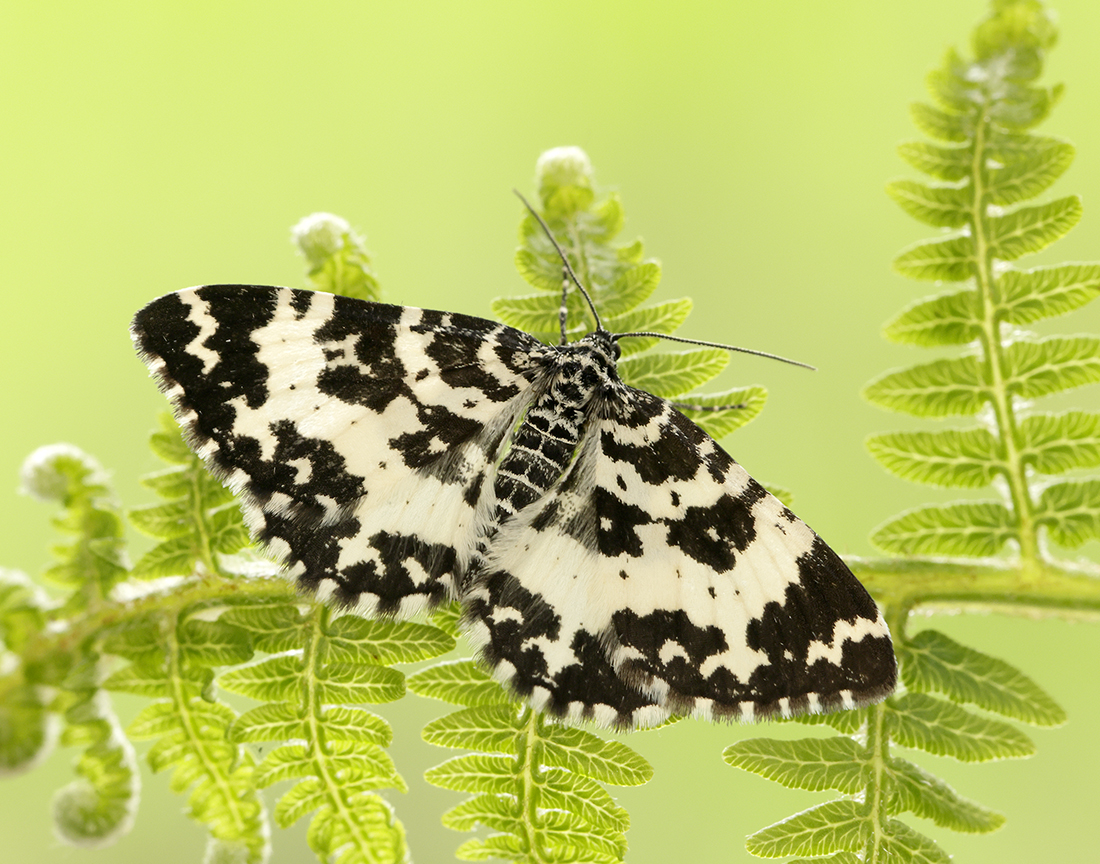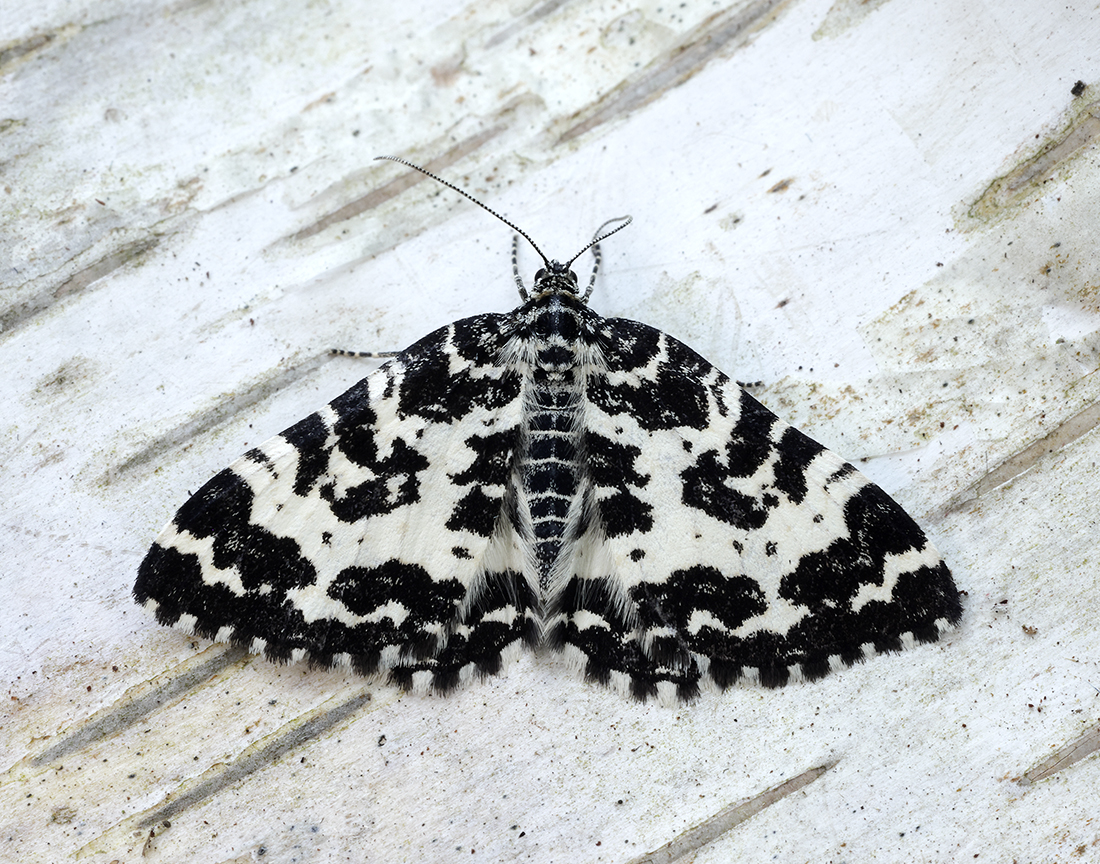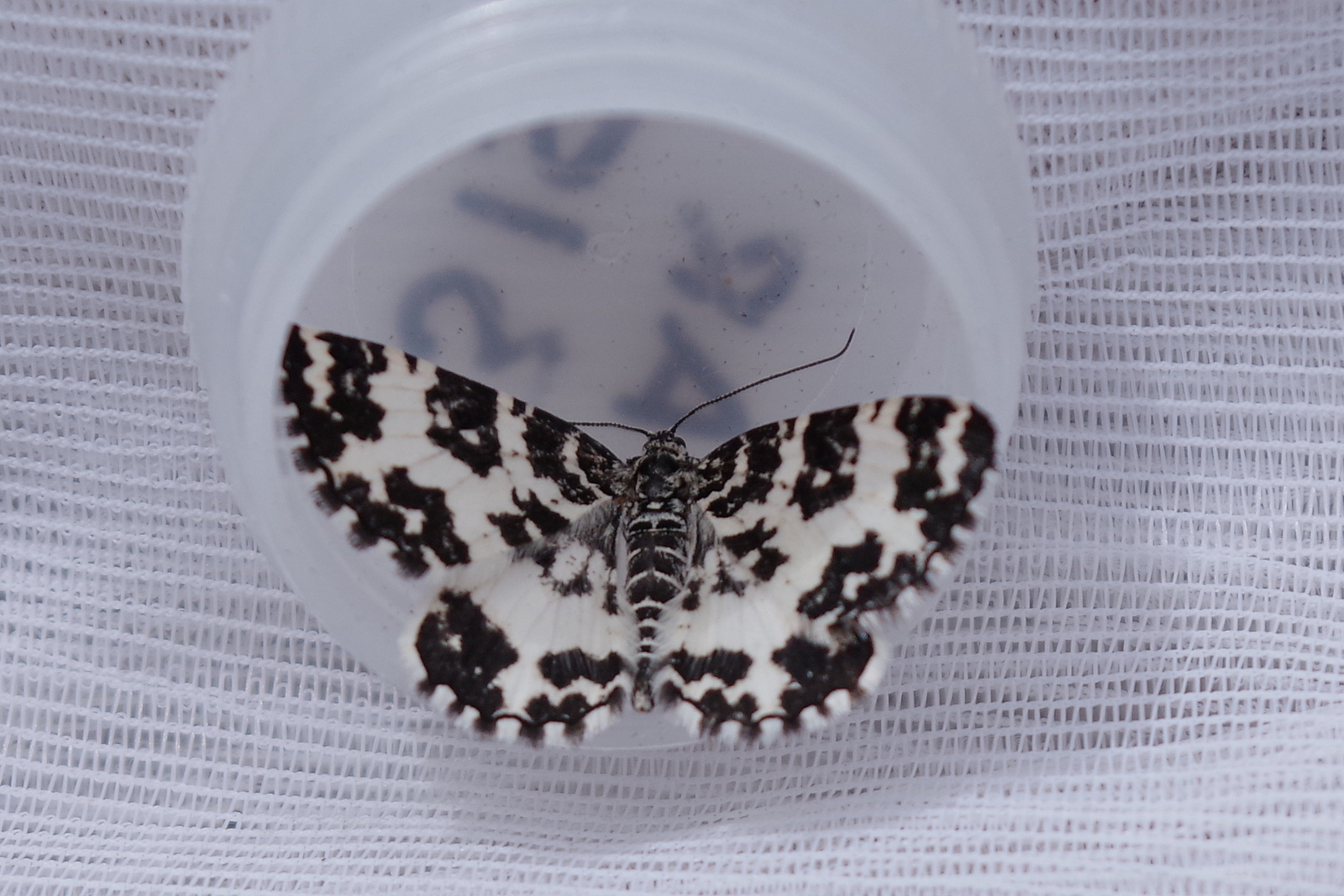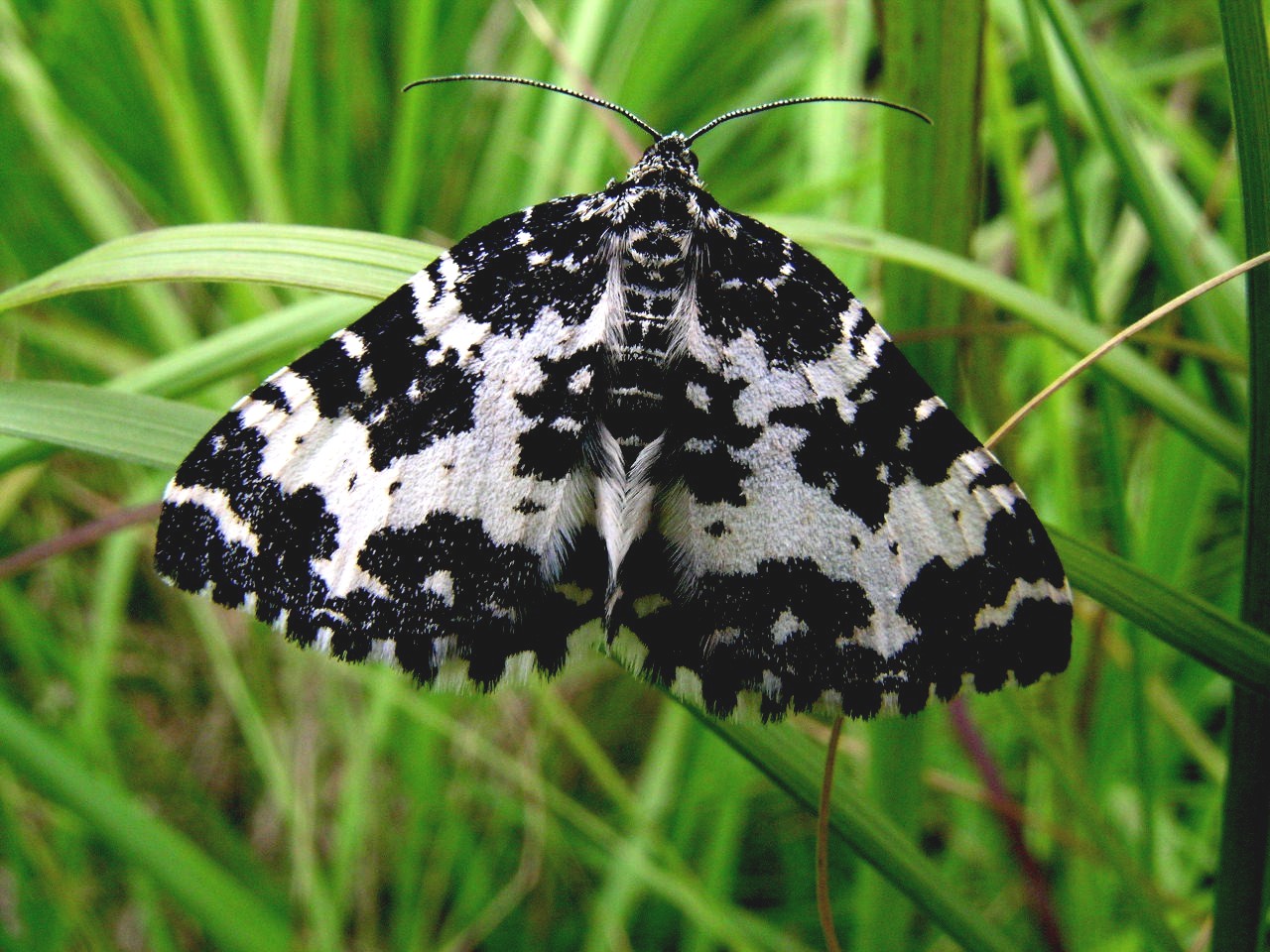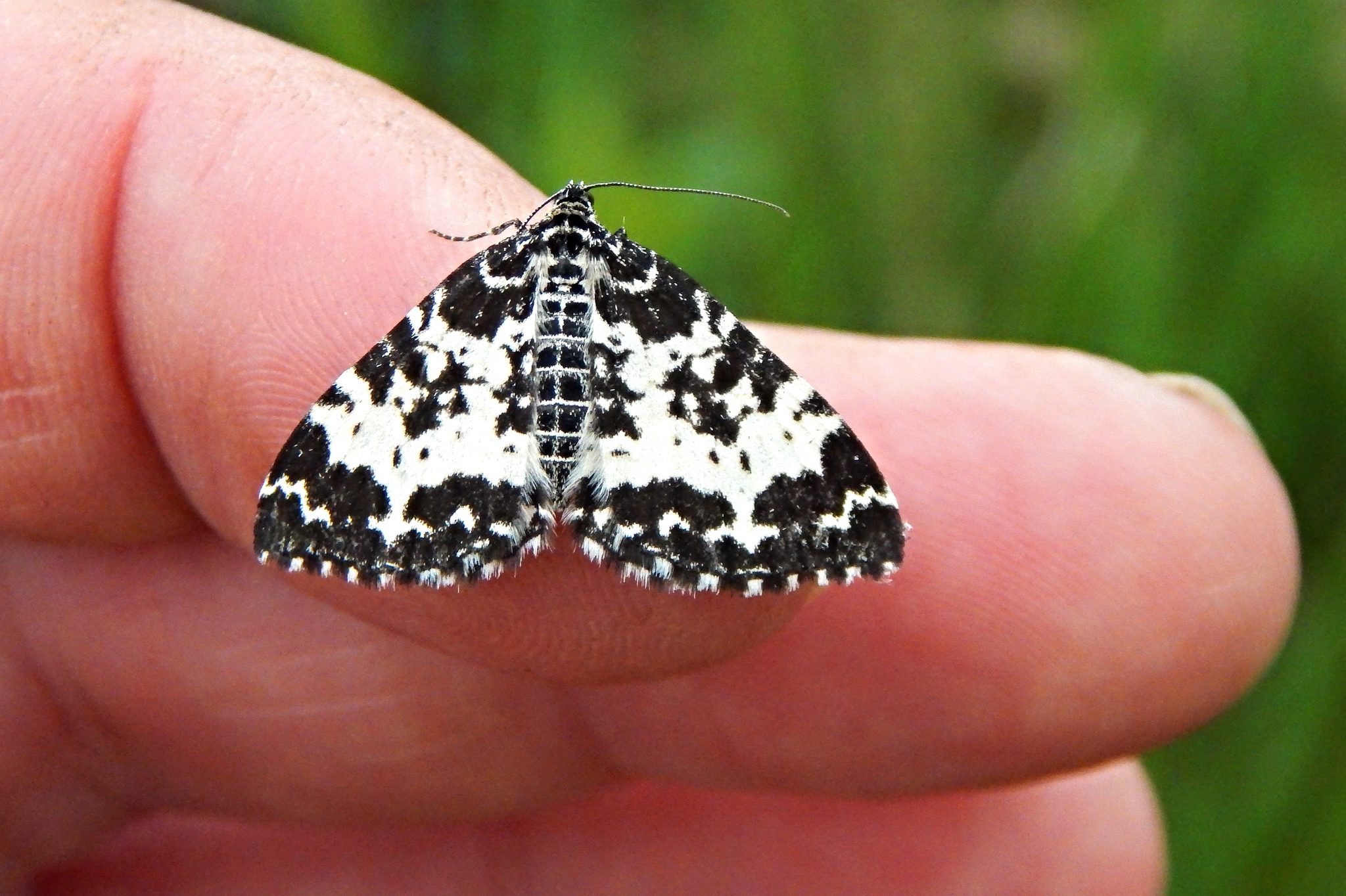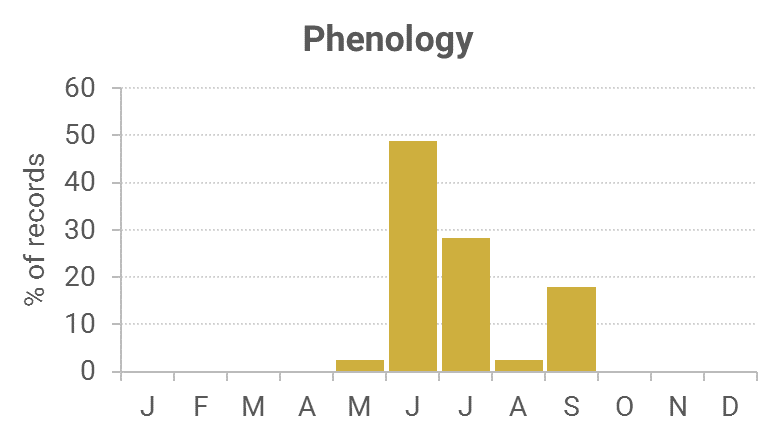Identification
The black and white pattern on the wings makes it easily recognisable, but the Small Argent and Sable is similar, but is smaller, has a straighter forewing costa and the central dark band across the forewing is rarely broken.
Both forms occur in the region: the smaller race, nigrescens, is a moorland species the caterpillar of which feeds on bog myrtle, while hastata feeds on small birch trees.
Recording method
Both sexes fly by day in warm or sunny weather.
Life cycle
One generation. Overwinters as a pupa in plant debris. Larvae are present July and August in a ‘spinning’ that it constructs by fastening the leaves together of its foodplant. On birch the leaf appears triangular or ‘samosa’ like in shape, while it is a domed cylindrical spinning on bog myrtle. The caterpillar is of a glossy black with fine golden markings along its flanks, which become more extensive as the caterpillar grows.
Larval foodplants
Downy Birch, Silver Birch and Bog-myrtle.
Habitat
Damp moorland and rough grassland.
History
First recorded for Dumfries and Galloway in 1860 for VC72 near Dumfries by Lennon who stated ‘I had the good fortune this year to take a fine variety of Melanippe hastata: it is larger and finer than the common kind, with much more pure white, and a fine pure white fringe, running round both wings’, in 1862 for VC73 at Dalskairth also by Lennon, and in 1898 for VC74 at Corsemalzie by Gordon who later ‘found it to be common and generally distributed in Wigtownshire, but being scarce of late. It had been noticed flying along stone dykes where bracken occurs on moorland in June’.


